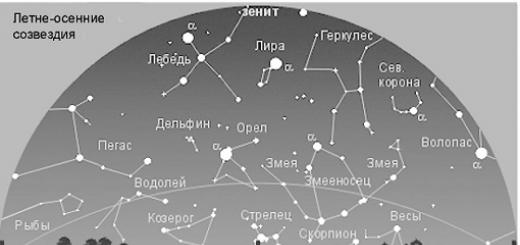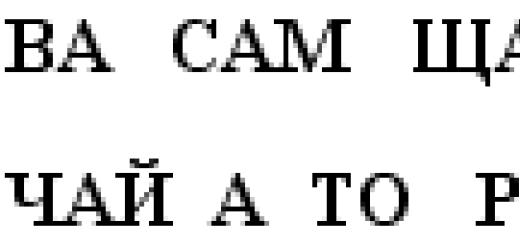Russian alphabet for foreigners: often, not only foreigners who begin to learn Russian, but also foreigners of an advanced level cannot correctly pronounce some Russian sounds. We'll talk about what letters of the Russian alphabet cause difficulties for foreigners, we will give recommendations for teachers on how to teach the phonetics of the Russian language, what phonetic exercises for foreigners need to be performed and what difficulties may arise in their implementation, we will separately talk about those that cause the greatest difficulties for foreigners.
Russian as a foreign language
How to teach Russian pronunciation: letters and sounds
Lessons for teachers of Russian as a foreign language (RFL)
For beginners to learn Russian for foreigners difficulty in learning the Russian alphabet and Russian phonetics lies in the fact that almost all letters of the Russian alphabet can denote several different sounds, for example: the letter E can denote the sounds [E], [YE], [I], and sometimes even the letter E can denote the sound [Ы] ( after consonants Zh, Sh, Ts without stress: price, wife).
Setting the pronunciation- this is another difficulty for teachers of Russian as a foreign language when teaching Russian to both beginners and foreigners continuing to study Russian. Below are recommendations how to put the pronunciation of Russian sounds in the lessons of Russian as a foreign language.
Rules for staging Russian sounds. Teaching the phonetics of the Russian language
Phonetics of the Russian language for foreigners: work on staging any sound of the Russian language you need to start with the formulation of phonemic hearing, i.e. first you need to ensure that the foreigner distinguishes sounds by ear. This is important because many Russian sounds sound the same to foreigners. For example, if your student says “grandfather” instead of “girl”, and when you correct him, he answers that he said so, then this means that your student does not distinguish sounds [D] and [V] by ear, they are for it sound the same.
In order for foreigners to learn to distinguish sounds by ear, we recommend doing the following exercises:
Exercise "Playing with cards":
1. Take two sheets of paper, write on them the sounds that you will practice. For example, on one sheet we write D, and on the other - V. Let's give these cards to a foreigner. The teacher pronounces the sounds [D] and [V] in random order, and the foreigner must raise the corresponding card. Of course, the teacher must tell the foreigner if he makes a mistake.
2. Then the teacher pronounces syllables, for example: wa - yes, du - wu, ava - hell, etc., and the foreigner must raise the “D” card or the “B” card.
Exercise "Phonetic dictation":
The teacher dictates sounds, syllables, words to the student, and the foreigner writes down what he hears.
Please note that in the exercise “Playing with Cards” and “Phonetic Dictation”, when practicing consonant sounds, you do not need to dictate words that end in voiced paired consonant letters (B, C, D, D, F, Z), because. when pronouncing at the end of a word, voiced paired consonants are stunned. For example, if you dictate to a foreigner “bow”, “meadow”, then a foreigner will write down “bow”, “bow”, because “meadow” is pronounced like “lu[K]”, while your foreign student will not make a mistake, because this is a phonetic, not a spelling dictation.
When a foreigner began to distinguish Russian sounds by ear, the teacher can already change places with the foreigner, i.e. the teacher shows the card, and the foreigner says what is written. At this stage, another problem arises: a foreigner hears and understands how a Russian sound should sound, but cannot pronounce it correctly. The greatest difficulties for foreigners arise when pronouncing the following sounds: [S], [Y], [R], [W], [C], [W], [Sh]. Below we will consider the rules for setting these sounds and give recommendations on how to explain Russian phonetics to foreigners, how to conduct phonetic exercises for foreigners.
Russian alphabet - Letters I, Y
Pronunciation of sounds [I], [S]. Phonetic exercises for foreigners
Pronunciation of the Russian vowel sound [Ы] causes difficulties for almost all foreigners. For example, foreigners pronounce "mi" instead of "we" and "beat" instead of "be".
Pronunciation of the vowel sound [I] causes much less difficulty for foreigners. The Russian sound [I] is similar to the English sound. To pronounce the sound [I] you need to point the tongue forward and touch the tip of the tongue to the lower teeth. When pronouncing [And] your students need to smile a little :).
Let's return to the formulation of the problematic Russian sound [S]. When pronouncing it, the entire tongue must be moved back and tighten the back of your tongue. Now the tip of the tongue no longer touches the lower teeth, but is pushed back. When we pronounce [S], we no longer smile (of course, such a complex sound!)
In order to help foreigners strain the back of the tongue when pronouncing the sound [Ы], there is the following technique: we will use the helper sounds [K] and [G]. The pronunciation of the sounds themselves [K] and [G] usually does not cause difficulty for foreigners, but when they are pronounced, the back of the tongue automatically tenses, and this is what we use in our phonetic exercise for foreigners:
yk - yg - yk - yg - yk - yg - yk - yg
ky - gee - ky - gee - ky - gee - ky - gee
yky - ygy - yky - ygy - yky - ygy - yky - ygy
s - s - s - s - s - s - s - s
ky - kms - we - washed
gee - gee - we - washed
ky - ky - you - howl
gee - gee - you - howl
ky - kby - would - was
gee - gby - would - was
soap, was, exit, exhibition, was, son, cheese, letters, smart
Russian alphabet - Letter Y
Pronunciation of the Russian sound [Y]. How to explain the sound [Y] to foreigners?
The attention of foreigners, who begin to study the phonetics of the Russian language, should be paid attention to the letter of the Russian alphabet Y. The sound [Y] is found in Russian speech much more often than the letter Y, because the vowels E, E, Yu, I at the beginning of the word, after the vowels and after the letters b and b denote two sounds: [YE], [YO], [YU], [YA], for example: [YO] lka , with [YE] hat, kal [YA] n.
Difficulty in pronouncing the sound [Y] (often this sound is denoted as [j] in transcription) usually occurs among foreigners if the letter Y is at the end of the word, for example: foreigners pronounce “sanatoriums” instead of “sanatorium” or “my” instead of “my ". Very often, foreigners do not distinguish by ear the sounds [Y] and [I], then it is advisable to do the exercise “Playing with cards” with foreigners.
How to explain to a foreigner the difference between the sounds [Y], [I] and how to teach a foreigner to pronounce the sound [Y]?
It is necessary to explain to a foreigner that the sound [Y] is pronounced VERY briefly. The sound [And] can be sung: and-and-and-and-and-and-and-and-and-and ..., and the sound [Y] must be pronounced very briefly, as if someone pricked with a pin: OH! The sound [Y] is pronounced with much more tension than the sound [I], when pronouncing the sound [Y], the middle part of the tongue rises more, therefore a narrower gap is created between the palate and the tongue and the air stream escapes with greater pressure, more powerfully.
Pay attention of foreigners to the spelling of the letter of the Russian alphabet Y:
Often foreigners confuse not only the sounds [Y] and [I], but also the letters Y, I. Foreigners can write the letter Y as the letter I (without a check mark over the letter Y), they do this by analogy with writing the letters Yo and E, t .to. it is not necessary to put a dot over the letter Y in writing.
The teacher should draw the foreigner's attention to the fact that when writing the letter Y, you always need to put a tick over the letter, because the absence of a check mark above the letter Y is a spelling and grammatical error. Compare: "my favorite cowboy" and "my favorite cowboys."
Russian alphabet - Letter P
Pronunciation of the Russian sound [Р]. Phonetic exercises for foreigners
When pronouncing the Russian consonant sound [P], the tense tip of the tongue vibrates near the alveoli (these are tubercles above the upper teeth) under the action of an air jet.
So, when pronouncing the sound [P], the tip of the tongue is slightly bent up, touches the tubercles above the teeth and is tense. But it is quite difficult for a foreigner to make the tip of the tongue vibrate. To help a foreigner, we turn to the helper sounds [T] and [D], during the pronunciation of which the tongue automatically takes the desired position at the alveoli.
Let's start our phonetic exercises.
Let's start the bike!
dr – dr – dr – dr – dr – dr – dr – dr – dr – dr – dr – dr – dr – dr – dr – dr – dr – dr…
Who has a motorcycle?
Let's do some more exercises (pronunciation of the sound [P]):
dra - dra - dra - dra - dra - dra - dra - fight
draw - draw - draw - draw - draw - draw - draw - fraction
dru - dru - dru - dru - dru - dru - dru - friend
tra - tra - tra - tra - tra - tra - tra - trauma
tro - tro - tro - tro - tro - tro - tro - rope
tru - tru - tru - tru - tru - tru - tru - coward
|
dra - dra - dra - ra - cancer draw - draw - draw - ro - rock dru - dru - dru - ru - pen dry - dry - dry - ry - fish |
tra - tra - tra - ra - frame tro-tro-tro-ro-robot tru – tru – tru – ru – Russian try - try - try - ry - market |
To practice the pronunciation of the soft sound [P '], in phonetic exercises, after the letter P, you need to use vowels that soften the previous consonant (E, E, I, Yu, I).
Russian alphabet - Letter Zh
Pronunciation of the Russian sound [Ж]. Phonetic exercises for foreigners
Another letter of the Russian alphabet - the letter Zh - is unusual for foreigners both in its spelling (some foreigners call it a butterfly) and pronunciation.
When pronouncing the sound [Ж], the tip of the tongue is raised to the alveoli (to the tubercles behind the upper teeth) and the tongue is pulled back.
For staging LJ the last sound [Ж] we will again turn to the helper sounds: the consonant [Г] and the vowels [О], [У]. The sound [G] will help to pull the tongue back, and the sounds [O] and [U] will help to stretch forward and round the lips.
Phonetic exercises for foreigners:
gzhu - gzhu - gzhu - zhu - magazine, beetle, buzz, I'll tell you
gzho - gzho - gzho - zho - yellow, alien, knife, circle
The pronunciation of the sound [Ш] is similar to the pronunciation of the sound [Ж], but the difference lies in the fact that the sound [Ш] is pronounced without the participation of the vocal cords (no voice, only noise). Below we will separately talk about the letters of the Russian alphabet Ш and Ш.
Russian alphabet - Letter C
The pronunciation of the Russian sound [Ts]. How to explain the Russian sound [Ts] to foreigners?
The Russian sound [Ts] is a single and indivisible sound, although it looks like a combination of sounds [T + S], which is why some foreigners pronounce two sounds [TS] instead of the letter Ts. In this case, the foreigner must be explained that the sound [T] must be pronounced maximum briefly!
It is better to work out the pronunciation of the sound [Ts] in words where the letter T is after the letters T or D, for example: fathers, to the father, with the father, thirteen, thirty, twenty, twelve, well done ...
Russian alphabet - Letters Ш and Ш
Pronunciation of Russian sounds [Ш] and [Ш]. Phonetic exercises for foreigners
Foreigners often confuse the sounds [Ш] and [Ш] and do not even distinguish these sounds by ear. In this case, you already know what to do! Of course, do the exercise "Game with cards."
Compare how the tongue and lips are located when pronouncing the sound [Ш] and the sound [Ш]:
When pronouncing the sound [Щ], the entire tongue moves forward, the middle part of the tongue is raised to the palate, the tongue is tense. When pronouncing the sound [Ш], the lips are less extended forward than when pronouncing the sound [Ш]. When pronouncing the sound [Ш], the corners of the lips are slightly stretched, and when pronouncing [Ш], we do not smile.
The sound [Щ] is pronounced LONGER than the sound [Ш].
The sound [Щ] causes much more difficulties for foreigners. It is necessary to ensure that foreigners pronounce the sound [Щ] softly. Therefore, in the phonetic exercise, we use the vowel sound [I]:
Search - search - cabbage soup - shield
Search - search - sche - cheek
Search - search - more - brush
Search - search - schu - feel
How to perform phonetic exercises correctly when teaching phonetics of the Russian language to foreigners
When you do any phonetic exercise, you must adhere to the following scheme:
1) When teaching the phonetics of the Russian language, the teacher first reads the letters, syllables, words, and the foreigner listens to the teacher and follows the text.
2) Then the teacher reads and the foreigner repeats.
3) And only now the foreigner reads on his own.
If you need to explain to a foreigner the position of the tongue when pronouncing a sound, then you can show it with your hands. For example, the right hand is rounded, fingers pointing to the floor. Now your right hand is the palate, alveoli and teeth. And from the left hand we will make a tongue. Now you can show foreigners the position of the tongue in the mouth.
Thanks to this, we will be able to explain practically do without an intermediary language which of course is a big plus.
When creating materials for foreigners and teachers of Russian as a foreign language, we are always focused on ensuring that Russian language lessons are not only as effective as possible, but also easy.
Materials on the Russian language for foreigners:
New communicative textbook published by our Center:
Distance course of methodology for those wishing to teach Russian to foreigners:
- The course provides all the necessary knowledge for teaching Russian to foreigners.
- The course is adapted for those who do not have special philological training.
- The course will help novice RFL teachers find answers to questions that arise in the course of teaching Russian as a foreign language.
The very first thing to start learning a language is the English alphabet ( English Alphabet). You don't have to learn it in letter order like you do in school. But to know how to read and write the letters of the English language is simply necessary.
Modern realities are such that we encounter the letters of the English alphabet every day. Even a child can read English words today, but many people do it, as a rule, with errors in pronunciation.
You probably had such a situation when you were on the phone trying to dictate some foreign word or your personal E-mail. And they used "the letter S - like a dollar sign" or "the letter i which is written like a stick with a dot at the top."
Specially created by us, interactive exercises and tables will help you learn how to pronounce the letters of the English alphabet correctly and speed up your learning several times if you devote only a few minutes a day to them, and all this is completely free.
Vowels and consonants
The English alphabet includes 6 vowels and 20 consonants. Vowels are marked in red and consonants in green. There are 26 letters in the English alphabet.
Alphabet setting
You can only select the letters you want to learn
Customize all lettersAlphabet with transcription and pronunciation
Exercise #1Below is an interactive table of the English alphabet with transcription and translation into Russian. In the table, you can hide the necessary columns, and after clicking on the rows, they will reappear.
You can also look at the printed and written English alphabet and see how English letters are spelled correctly.
In order to hear the correct pronunciation of the letter of the alphabet you need, just click on it and listen to the audio pronunciation
This method of learning will help you memorize the letters of the English alphabet faster, but it is worth noting that the translation of pronunciation into Russian is only conditional.
Writing English letters
Aa printed
Aa uppercase
Hide columns for study
Letters of the alphabet Transcription Pronunciation
| № | letters of the alphabet | English transcription | Russian pronunciation |
|---|---|---|---|
Modern life dictates its own requirements for the development of children. They have to acquire many knowledge and skills at an earlier age than it was a few years ago. A child who cannot read in first grade today looks like a white crow. Therefore, it is quite understandable the desire of modern parents to teach their baby letters as early as possible in order to subsequently teach them to read.
How to learn letters with a child? How to make this process interesting? What little tricks can be used in the learning process? Let's find out what the experts advise.
At what age can you learn letters?
Before starting to get acquainted with the alphabet, many are wondering - is it too early? At what age will a child better remember the studied letters?
There is no single answer here. For each child, everything is individual. If you regularly work with your baby, read books to him, look at pictures in books for the smallest, if a child from a very early age sees that letters are interesting that they can be read, sees you reading books, then the desire to learn letters from it may appear quite early.
If parents are not lovers of reading, then the desire to get acquainted with the letters of the child may appear later. Usually acquaintance with letters occurs at the age of 3 to 5 years. During this period, classes should begin.
Learning letters while playing
How to turn the study of letters into an interesting activity that will captivate and not tire the child?
The most important thing is to try to study the letters in a playful way. It is difficult for a small child to study diligently, mastering new knowledge. Therefore, classes should be short, but regular.
To get started, you should get cards with letters, developing books, teaching kids the alphabet, colored cubes with the image of letters, a plastic alphabet, or simply print the letters on separate sheets of paper on a printer.
Letters can be learned in any order. It is not necessary to go through the alphabet in strict sequence, starting with the letter "A". Pay attention to which letters the child remembered more easily, which of them he liked and liked with their shape, sound, so start learning from them, going through the rest of the letters a little later.
Many children, especially if there is an older schoolchild in the family, want to get older as soon as possible and also go to school. In this case, you can arrange a school right at home! Take a small magnetic board, put a table, a chair and play school by learning the letters. The main thing is not to make classes too long. 10-15 minutes will be enough.
Try to connect the child with some association with each letter that will help him remember it better. It is good in this case to use developing books, where on each page, along with the letter being studied, there is an image of an object or animal that begins with this letter. The letter "D" looks like a house, after seeing such a picture, the child will remember this letter pretty soon. “Daddy’s” letter “P” and “mother’s” letter “M” are easily remembered.
In the process of studying, read short poems dedicated to letters, find the desired letter on cubes or cards, draw letters with a child on paper, sand, a sweaty window, lay them out of pebbles and any other objects.
"M" or "Em"?
The question often arises - how to learn letters correctly - by the sounds they mean or by their names? How to pronounce the letters being studied correctly: “r” or “er”, “m” or “em”, “k” or “ka”? On the one hand, each letter has its own specific name; “be”, “ve”, “ge”, “de”, but, on the other hand, we say “house”, and not “de-o-em”.
Letter is a written sign that denotes a certain sound. The same letter can represent different sounds. For example, a letter G in the word around denotes the sound [g], and in the word a circle- sound [k].
All letters used in written speech and arranged in the accepted order are called alphabetically.
The Russian alphabet contains 33 letters. Letters are divided into large (capital) - A, T, F, and small (lowercase) - a, t, f. Each letter has a name: BUT- a, T- te, L- ale, To- ka and so on, a certain place in the alphabet and its own style, which distinguishes it from other letters.
Russian language alphabet
Russian alphabet with transcription of letters:
| Letters | Transcription | Letters | Transcription | |||
|---|---|---|---|---|---|---|
| printed | uppercase | printed | uppercase | |||
| A a | A a | [a] | R p | R p | [er] | |
| B b | B b | [be] | C with | C with | [es] | |
| in in | in in | [ve] | T t | T t | [te] | |
| G g | G g | [ge] | u u | u u | [y] | |
| D d | D d | [de] | f f | f f | [ef] | |
| Her | Her | [th "e] | x x | x x | [Ha] | |
| Her | Her | [th "o] | C c | C c | [ce] | |
| F | F | [ge] | h h | h h | [che] | |
| W h | W h | [ze] | W w | W w | [sha] | |
| And and | And and | [and] | u u | u u | [sha] | |
| th | th | and short [th"] |
b b | b b | solid mark | |
| K to | K to | [ka] | s s | s s | [s] | |
| L l | L l | [el"] | b b | b b | soft sign | |
| Mm | Mm | [Em] | uh uh | uh uh | [e] | |
| N n | N n | [en] | yu yu | yu yu | [th "y] | |
| Oh oh | Oh oh | [about] | I am | I am | [th "a] | |
| P p | P p | [pe] | ||||
Block and capital letters
Each letter has two types of outline: printed and uppercase. Printed letters are used in books, websites and so on. Capital letters are written by hand, that is, they are handwritten.
A a, D d, M m - block letters
A a, D e, M m- capital letters
The division of letters into printed and uppercase is rather arbitrary, since on the one hand there are fonts that imitate capitalization, on the other hand, there are people who are more comfortable writing in block letters, rather than capitalizing them.
Consonants and vowels of the alphabet
The Russian alphabet contains 33 letters, of which 10 are vowels:
a, e, e, i, o, u, s, e, u, i
21 consonants:
b, c, d, e, f, h, d, k, l, m, n
p, r, s, t, f, x, c, h, w, u
Polish is one of the Slavic languages, so native speakers of Belarusian, Russian and Ukrainian will just need to master it. Some words are very similar, syntax and other grammatical constructions are close.
So, the very first thing you need to know is how many letters are in the Polish alphabet? 32 letters.
At the same time, the Poles have a Latin alphabet, but with the addition of special letters denoting sounds characteristic of Polish speech that are absent in other languages using the Latin alphabet.
Note, the letters Q, V and X are missing from the alphabet, but they can occur in words of foreign (non-Polish) origin, especially in proper names.
| Letter | Letter pronunciation (audio) | Example | Word pronunciation (audio) |
|---|---|---|---|
| A a | pr a c a | ||
| Work | |||
| Ą ą | m ą ż | ||
| [ɔ / ou] | husband | ||
| Bb | nie b o | ||
| sky | |||
| c c | With about | ||
| [ʦ/ts] | what | ||
| Ć ć | by ć | ||
| [ʨ/who] | to be | ||
| D d | d aleko | ||
| long away | |||
| e e | t eż | ||
| [ɛ/e] | too, also | ||
| Ę ę | imi ę | ||
| [ε/eu] | name | ||
| F f | f ilm | ||
| movie | |||
| G g | g ość | ||
| the guest | |||
| H h | h erbata | ||
| tea | |||
| I i | iść | ||
| go | |||
| Jj | j echać | ||
| drive | |||
| Kk | k awa | ||
| coffee | |||
| l l | l ubic | ||
| be in love | |||
| Ł ł | mi ł y | ||
| cute | |||
| M m | m ost | ||
| bridge | |||
| N n | ra n o | ||
| morning | |||
| Ń ń | ta ń czyć | ||
| [ɲ/ny] | dance | ||
| O o | o kn o | ||
| [ɔ/o] | window | ||
| Ó ó | m ó c | ||
| be able | |||
| Pp | p rzerwa | ||
| break | |||
| R r | r obic | ||
| do | |||
| S s | s yn | ||
| son | |||
| Ś ś | ś roda | ||
| [ɕ/w] | Wednesday | ||
| T t | t eras | ||
| now | |||
| U u | sz u kać | ||
| search | |||
| W w | w olny | ||
| free | |||
| Y y | cz y | ||
| [ɨ/s] | whether | ||
| Zz | z amek | ||
| lock | |||
| Ź ź | je ź dzic | ||
| [ʒ/w] | ride | ||
| Ż ż | ż ona | ||
| [ʑ/zh] | wife |
How to learn?
To learn the Polish alphabet, you need to know how its letters and combinations are read. We will talk about this further.
Pronunciation of letter combinations
In addition to the above, in Polish there are combinations of letters pronounced as one sound:
Vowel pronunciation
Polish vowels are in many ways similar to Russian in pronunciation, but there are some differences.
Letters a, e, y, u, j
The sound of the letter BUT"is fully consistent with Russian. For example, Polish k a w a(Russian coffee) is pronounced like [ kava].
« E" sounds like the Russian "E": zamek (Russian castle) - [ zamek].
« At” corresponds to the Russian “Y”: rybny (Russian fish) - [ fish], stary (Russian old) - [ old].
Polish " U"It is completely similar to the Russian "U": kurtka (Russian jacket) - [ jacket].
In combination with the preceding "i", the pronunciation may change somewhat - see below for this.
« J» is often referred to as a semivowel. It fully corresponds to the Russian "Y": jasny (Russian clear) - [ clear].
How is the letter "i" pronounced?
Letter " i” in most cases coincides with the Russian “and”: minister (Russian minister) - [ minister], malina (Russian raspberry) - [ raspberry].
However, in a number of combinations the sound " i" is not pronounced at all, but is an indication that the previous consonant is softened. These combinations include "ia", "ie", "iu" and "io".
Examples:
- miasto (city) - [ locality];
- piosenka (song) - [ doggie];
- tiul (tulle) - [ tulle];
- beeg (running) - [ back];
- wiek (century) - [ century].
In words of foreign origin, these combinations can form the sounds "yo", "ye", "ya", "yu". Examples: historia (Russian history) - [ histor'ya], armia (Russian army) - [ arm'ya].
Vowels o, o
« O"- corresponds to the Russian "O", but is always pronounced in this form, without turning into "A".
One of the most common mistakes of native speakers of the Russian language, especially from its central and southern regions of distribution, out of habit to “hack” Polish words is a mistake! For example, the word pogoda (Russian weather) always pronounced like [ weather] and never how [ pagoda], and robotnik (Russian worker) always sounds like [ robot worker], and the form [ worker] is invalid.
Somewhat more difficult with the vowel " Ó ". It is pronounced like the Russian "U", but is often used in words similar to Russian counterparts, but with the letter "O". For example, góra (Russian mountain) - [ goura], wódka (Russian vodka) - [ vutka].
Besides, " Ó " often turns into a regular "O" when changing the form of the word (declension, changes in numbers, etc.): ogród (Russian garden) - [ Ogrut], but ogrody (Russian gardens) - [ fences], mój (Russian mine) - [ mui], but mojego (rus. mine) - [ my].
"Nasal" ę, ą
These vowels, due to the specifics of their pronunciation, are called nasal. They sound like ę – [en], ą – [he]. The "H" sound at the end is pronounced with a slight nasal overtone. For the convenience of transcription, we will agree to write these letters / sounds in such a pronunciation as ę – [en], ą – [he]: język (Russian language) - [ yenzyk], zakąska (Russian snack) - [ zakonska].
There are a number of exceptions:
- Letter ę at the end of the word it is pronounced like the letter “e”: imię (Russian name) - [ um'ye].
- Before letters c, d, t and combinations dz, dź, cz ę sounds like a full-blown [ en], a ą how [ he] without any nasal overtones: mętny (Russian muddy) - [ mantny], mądry (Russian wise) - [ monsters].
- Before ć and the combination dż - "n" in both sounds softens: ę — [en], ą [ he].
- Before the letters b and p, the nasal overtone is preserved, but turns into "M", i.e. ę – [Em], ą – [ohm]: zęby (Russian teeth) - [ zemba], dąb (Russian oak) - [ domp].
- Before l and ł, both letters lose their nasal sound, retaining only sounds ę – [uh], ą – [about]: zginął (Rus. he died) - [ zginow], zginęła (Russian she died) - [ zgineўa].
Pronunciation of consonants
The pronunciation of Polish consonants is not difficult. They are very similar to Russians:
- voiced consonants are also stunned at the end of the word: Bug (Russian river Bug) - [ beech].
- voiced consonants in front of the deaf also sound deaf: budka (Russian booth) - [ butka].
Should be remembered, what " G”is always pronounced like a hard Russian “G” - it never softens and does not change into other sounds: dobrego (Russian genus case - good) - [ kindly]. Forms [ dobrevo] or [ good] are invalid!
Letters H and CH- this is a different spelling of the same sound, equal to the Russian "X".
stress
Dealing with accents is the easiest way - in most cases, the penultimate syllable is stressed.
Exceptions to this rule are so rare that they are not found in all dictionaries.
Words ending in -ski, -cki, and -dzki
Words with the endings -ski, -cki and -dzki deserve special attention. Most often they are found in the names of geographical objects. They are pronounced (in Polish) in accordance with the rules described above, but in Russian they have analogues:
- Adjectives for - ski, —cki are transmitted in the appropriate number and gender of the Russian form: Puszcza Notecka [ Forest Noteska] - note tskaya forest.
- In the case of a suffix - sk- the consonant sound present in the noun from which the adjective is formed is restored: Kaliski [ kaliski] comes from Kalisz [ kalish] - Russian form of Kali w sky.
- In words on - dzki ending is passed as " -dsky", if the stem noun ended with "d", and " -dzy"- if the word ended in "dz": Grudziądzki (noun-base Grudzią dz), means the Russian form Grudzen Dzic, but Starogradzki (the stem word of Starogra d) - Starogra children's.
Having learned the basic rules of pronunciation, it remains only to replenish the vocabulary and you can feel more comfortable on the streets of Poland, and fill out or check the necessary documents yourself, which will help to avoid mistakes or deception.










